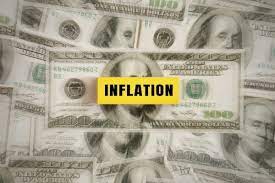Insurance tax relief refers to the tax benefits that individuals or businesses may receive for purchasing certain types of insurance policies. In many countries, including the United States, the cost of insurance premiums is tax-deductible under certain conditions. This means that the amount of money paid towards insurance premiums can be subtracted from taxable income, reducing the amount of taxes owed.
The types of insurance policies that may qualify for tax relief vary by country and by individual circumstances. For example, in the United States, individuals may be able to deduct premiums for health insurance, long-term care insurance, and certain types of life insurance. Businesses may also be able to deduct premiums for group health insurance, liability insurance, and other types of business insurance.
It is important to consult with a tax professional or insurance agent to understand the specific tax relief options available based on your circumstances and location.
The article provides an overview of the ax saving related to the Fiscal Deal and Insurance Tax Relief that was recently announced by the UK Government. The relief will be available in three forms, which will affect individuals, companies, and pension funds. It is hoped that these measures will encourage economic growth and job creation in the UK.
7 investments you can make to save tax under Section 80C
Investing in tax-saving instruments is a smart way to lower your income tax liability. Under Section 80C of the Income Tax Act, taxpayers can claim deductions up to Rs.1.5 lakh by investing in certain financial products. Some of the investments that qualify for tax relief under this section include the Public Provident Fund (PPF), Equity-Linked Saving Scheme (ELSS), National Savings Certificate (NSC), Sukanya Samriddhi Yojana (SSY), Senior Citizens Savings Scheme (SCSS), and Fixed Deposits (FDs) with a lock-in period of five years.
Among these options, FDs are one of the most popular investment choices as they offer guaranteed returns and are considered low-risk investments. Additionally, investing in an FD with a lock-in period of five years qualifies for tax relief under Section 80C. Insurance policies also qualify for deduction under this section; you can invest in life insurance plans or health insurance plans to avail of such benefits.
In conclusion, there are several investment options available that help save taxes and provide attractive returns at the same time. It is important to understand the terms and conditions associated with each product before selecting one that suits your needs best. By making informed investment decisions, you can not only save on taxes but also secure your financial future for the long term.
Tell me the difference between tax savings and fixed deposits.
Tax savings and fixed deposits are two different investment options that have their unique features. Fixed deposits offer a guaranteed return on investment, but the interest earned on the principal amount is subject to tax. On the other hand, there are various tax-saving investments such as Public provident funds (PPFs), National Saving certificates (NSC), and Unit Linked Insurance Plans (ULIPs) among others that can help you save taxes.
Investing in fixed deposits can be a good option if you’re looking for a safe and secure way of earning returns on your investment. However, it is important to remember that the interest earned on FDs is added to your taxable income and taxed at your regular slab rate. In contrast, tax-saving investments such as PPFs or ULIPs can help lower your taxable income by allowing for deductions under Section 80C of the Income Tax Act.
Also Read: Razer Blade 15 2018 H2 Full Review in 2023
Additionally, insurance policies also come with specific tax benefits in India which work differently than saving through FDs. For instance, premiums paid towards life insurance policies are deductible from your taxable income under section 80C of the Income Tax Act. It is always advisable to assess both options before making any decision; weigh out all aspects and choose accordingly based on personal financial goals and risk appetite.
Maximize your savings with Max Life Investment Plans
Investment planning is an important aspect of financial management as it allows individuals to secure their future financially while maximizing their savings. Max Life Investment Plans offer a great opportunity for individuals to invest their money wisely and earn attractive returns in the long run. These investment plans are designed to cater to the varying needs of investors, making them well-suited for both short-term and long-term investments.
One of the key benefits of investing in Max Life Investment Plans is that they provide tax relief on both FDs and insurance premiums, which can help investors save a significant amount on taxes. Moreover, these plans offer flexible payment options, allowing investors to choose from monthly or annual payment modes based on their convenience. Additionally, the plans come with various fund options such as equity funds, debt funds, balanced funds, etc., providing investors with a diversified portfolio that helps mitigate risks and maximize returns.
Overall, Max Life Investment Plans are an ideal option for those looking to secure their financial future by investing wisely while minimizing tax liabilities. With its wide range of investment options and attractive features like tax relief and flexible payment modes, it’s no wonder that more and more people are turning to Max Life Investments for securing their financial future.
Taxation of FD earnings
Fixed Deposits (FDs) are a popular investment option among people who prefer stable returns. However, one must be aware that the earnings from FDs are taxable under the Income Tax Act of India. The interest earned on FDs is added to your total income and taxed at your applicable tax slab rate. Moreover, if the interest on your FD exceeds Rs. 10,000 per annum, TDS (Tax Deducted at Source) will be levied by banks.
It is important to note that senior citizens can avail of tax benefits on their fixed deposits. Under Section 80TTB of the Income Tax Act, they can claim a deduction of up to Rs. 50,000 on the interest earned from their fixed deposits in any financial year. This exemption applies only to senior citizens and not to those below 60 years of age.
Similarly, life insurance policies also offer tax benefits under Section 80C of the Income Tax Act. Premium paid towards life insurance policies is eligible for a deduction up to Rs.1,50,000 per annum from your taxable income. When it comes to maturity proceeds or death benefits received under these policies; they are exempted under Section 10(10D) of the Income Tax Act provided certain conditions are met such as minimum premium payment term and policy duration etc.
Life insurance
One of the most important financial decisions you can make is to invest in life insurance. Not only does it provide your loved ones with a sense of financial security and stability after you’re gone, but it can also offer tax benefits that can help preserve your savings. By investing in certain types of life insurance policies, such as permanent or whole-life policies, you may be eligible for tax relief that can reduce the amount of taxes you need to pay.
In addition to reducing your tax burden, investing in a life insurance policy offers other advantages too. For instance, if you opt for a permanent policy, which offers lifelong coverage and cash value accumulation, you’ll benefit from a guaranteed death benefit and an opportunity to build up funds that can be used for future expenses. Furthermore, some policies offer flexible payment options or allow policyholders to borrow against their accumulated cash value.
When considering investing in life insurance, it’s important to seek advice from a trusted financial advisor who understands both your goals and how different types of policies work. By doing so, you’ll gain valuable insights into the many ways life insurance can help protect your loved ones while also providing important tax benefits that could save you money over time.
Comparison with other tax-saving investments
When it comes to tax-saving investments, fixed deposits (FDs) and insurance policies are two popular choices. While FDs offer assured returns and are low-risk investments, they have a relatively lower rate of return compared to other investment options like mutual funds or stocks. Additionally, the interest earned on an FD is taxable beyond a certain limit. On the other hand, insurance policies not only provide tax benefits but also provide life cover protection. However, the returns on an insurance policy may not be as high as those from equity-linked savings schemes.
When it comes to investing in tax-saving instruments, one can also consider investing in Public Provident Fund (PPF), National Pension System (NPS), Equity-Linked Savings Scheme (ELSS), and Unit Linked Insurance Plans (ULIPs). PPFs offer a higher rate of interest than FDs and have a long-term investment horizon with extended lock-in periods. Similarly, NPS provides an additional deduction over the existing Rs 1.5 lakh under Section 80C while offering exposure to equity markets for better returns in the long term.
In conclusion, when choosing between different tax-saving investment options such as FDs and insurance policies, investors should consider their individual financial goals and risk appetite along with factors like liquidity requirements before making any decision. It is also essential to keep track of changing market dynamics regularly and realign your portfolio accordingly for optimal returns over time.
Employee Provident Fund (EPF)
One of the most popular retirement savings schemes in India is the Employee Provident Fund (EPF). It is a government-backed scheme that aims to provide financial security to employees after their retirement. Under this scheme, both the employer and employee contribute 12% of the employee’s basic salary towards their EPF account every month. The accumulated amount along with interest is paid out as a lump sum to the employee upon retirement.
Apart from being a retirement savings scheme, EPF also offers attractive tax benefits to individuals. The contributions made towards EPF are eligible for tax deductions under Section 80C of the Income Tax Act up to a maximum limit of Rs. 1.5 lakhs per annum. Additionally, any interest earned on EPF contributions during an individual’s employment period is also exempted from tax.
In addition to the aforementioned benefits, employees can also avail of tax relief on insurance premiums under Section 80D of the Income Tax Act by investing in an appropriate insurance policy or health plan offered by insurance companies. By doing so, individuals can claim deductions up to Rs. 25,000 per year on premiums paid towards health and medical insurance policies for themselves and their dependents.
Public Provident Fund (PPF)
Public Provident Fund (PPF) is a long-term investment option that not only helps individuals accumulate savings but also provides tax benefits. It is a government-backed scheme that has been designed to provide financial security and stability in the long run. The interest earned on PPF deposits is completely tax-free, which makes it one of the most popular investment options among Indian taxpayers.
One of the key features of PPF is its flexibility. Investors can invest as little as Rs 500 or as much as Rs 1.5 lakh per annum, and they can choose to extend their account for five years at a time after maturity if they wish to continue investing in this scheme. Also, investors have the option to make partial withdrawals from their accounts after the completion of six years.
In conclusion, Public Provident Fund (PPF) serves as an excellent investment option for individuals who want to save money while taking advantage of tax relief opportunities offered by the government. By investing in PPF, one can enjoy tax benefits while accumulating long-term savings with guaranteed returns. So, if you are looking for a secure and flexible investment option that offers high returns along with numerous tax benefits, then consider investing in PPF today!
Fixed Deposits (FD)
Fixed Deposits (FD) are a popular investment option for those who want to earn a higher interest rate than what traditional savings accounts offer. FDs provide guaranteed returns and the interest rate remains fixed throughout the tenure of the deposit. This means that one can calculate their earnings in advance and plan their finances accordingly. Moreover, investing in FDs is considered safer than other investment options such as stocks or mutual funds since there is no risk involved.
Apart from providing better returns, investing in an FD also offers tax benefits. The interest earned on an FD is taxable under the Income Tax Act, but individuals can claim a tax deduction on investments made in certain types of Fixed Deposits under Section 80C of the Income Tax Act. This helps investors reduce their tax liability while earning decent returns on their investments.
Additionally, investors can also enjoy insurance coverage by opting for certain types of Fixed Deposits that come with insurance coverage. These deposits ensure that even if something unexpected happens to the investor, their family will receive financial assistance to keep them going without any difficulties. Overall, investing in Fixed Deposits not only provides better returns but also offers peace of mind and security through tax benefits and insurance coverage.
National Pension System (NPS)
National Pension System (NPS) is a government-sponsored pension scheme that provides tax benefits to investors. It is regulated by the Pension Fund Regulatory and Development Authority (PFRDA). NPS aims to provide retirement income to individuals who are employed in the organized sector or self-employed professionals. It is a voluntary contribution-based pension system where individuals can contribute until they retire.
One of the key benefits of investing in NPS is tax savings. Investors can claim a tax deduction of up to Rs 1.5 lakhs per annum under Section 80C of the Income Tax Act for their contributions towards NPS. Additionally, an additional tax benefit of up to Rs 50,000 under Section 80CCD(1B) can be claimed for contributions made towards the Tier I account.
The investment options available in NPS include equity, corporate bonds, and government securities. The returns on investment depend on market performance and are not guaranteed by the government or PFRDA. However, over the years, NPS has delivered decent returns compared to other traditional investment options such as fixed deposits and insurance policies. Overall, if you are looking for an effective way to save taxes while securing your retirement income, then NPS could be a good option for you.
Unit Linked Insurance Plans (ULIP)
ULIPs, or Unit Linked Insurance Plans, are a type of investment product that combines the benefits of insurance and investments. They offer policyholders the opportunity to invest in a range of different funds while also providing life insurance coverage. The premium paid towards a ULIP is divided between the investment and insurance components based on the policyholder’s preferences.
When investing in ULIPs, it’s important to consider your risk appetite and investment goals carefully. ULIPs typically offer a variety of funds to choose from, such as equity, debt, or balanced funds. These funds can vary in terms of risk and potential returns.
One advantage of investing in ULIPs is tax relief offered under section 80C of the Income Tax Act, which allows policyholders to claim deductions for their premiums paid up to Rs 1.5 lakh per annum. Additionally, any maturity benefits received from ULIP plans are tax-free under section 10D of the Income Tax Act. Overall, if you’re looking for an investment product that provides both life insurance coverage and potential market-linked returns while offering tax-saving benefits at the same time, then ULIPs could be worth considering.
Benefits of tax saving fixed deposits
Fixed deposits (FDs) have always been considered a safe investment option among investors. And when it comes to tax-saving fixed deposits, they become even more lucrative for those who want to save taxes while earning guaranteed returns on their investments. These FDs are offered by various banks and financial institutions in India, and they come with a lock-in period of 5 years. One of the biggest advantages of these FDs is that they offer tax benefits under section 80C of the Income Tax Act.
Investing in tax-saving fixed deposits not only helps you save your hard-earned money from taxes but also provides you with an opportunity to earn higher interest rates compared to regular savings accounts. Moreover, these FDs come with low risk, which means your investment is protected against market fluctuations. They are also easy to manage and do not require any specialized knowledge or skills.
Apart from tax-saving fixed deposits, investing in insurance schemes can also help you save taxes while securing your future financially. Insurance companies offer several policies like term insurance plans, endowment plans, or ULIPs that come with tax benefits under section 80C and section 10(10D) of the Income Tax Act. By investing in such policies along with tax-saving fixed deposits, you can significantly lower your taxable income while earning decent returns on your investments.
What is a Tax-Saving FD?
A tax-saving FD, also known as a tax-saving fixed deposit or a tax-saving term deposit, is a type of fixed deposit account offered by banks in India. These accounts come with a lock-in period of five years and offer income tax benefits to the depositor under Section 80C of the Income Tax Act, of 1961. The maximum amount that can be invested in this account is Rs. 1.5 lakh per financial year.
The interest rate on these accounts is higher than that of regular fixed deposits, making them an attractive option for individuals looking to save taxes and earn returns on their investments. However, it should be noted that the interest earned on these accounts is taxable as per the depositor’s income slab.
In addition to tax-saving FDs, individuals can also avail of tax relief by investing in insurance policies such as life insurance and health insurance. Premiums paid towards these policies are eligible for deduction under Section 80C up to a maximum limit of Rs. 1.5 lakh per financial year.
Documents required | Tax saving FDs
When it comes to investing in tax-saving fixed deposits (FDs), it is important to have all the necessary documents in place. Firstly, you will need to provide your PAN card details as this is mandatory for investing in any financial instrument. Additionally, you will have to submit proof of address such as an Aadhaar card or passport, and a canceled cheque for bank account verification.
It’s also important to note that while FDs are a popular investment option for tax savings, they may not always be the most beneficial option depending on your income bracket. Hence, it’s advisable to consult with a financial advisor before making any investment decisions.
Another popular tax-saving option is insurance policies that offer tax relief under Section 80C of the Income Tax Act. In such cases, you will need to provide relevant documents such as the policy certificate and premium receipts at the time of filing taxes. It’s crucial to keep track of these documents and ensure they are easily accessible when required.
Key Features of a Tax-Saving FD
When it comes to saving taxes, tax-saving fixed deposits (FDs) can be a great investment option. These FDs have some key features that make them an attractive option for investors looking to save on taxes. Firstly, the lock-in period for these FDs is usually 5 years which means that investors cannot withdraw their money before this period ends. This provides a discipline of long-term investing while ensuring that the investor gets tax benefits.
Secondly, tax-saving FDs offer higher interest rates compared to regular savings accounts and even regular FDs. This makes it a lucrative investment option for those who want to earn higher returns while also saving on taxes.
Lastly, tax-saving fixed deposits offer tax relief under section 80C of the Income Tax Act. Investors can claim deductions up to Rs 1.5 lakhs in a financial year by investing in these instruments. Additionally, interest earned on such investments is also exempt from income tax up to Rs 10,000 per annum making it an ideal investment for those who want to save taxes without taking too much risk in their investments.
Benefits of a Tax-Saving FD
One of the primary benefits of a tax-saving Fixed Deposit (FD) is that it offers investors the opportunity to earn higher returns on their investments, while also reducing their tax liability. Tax-saving FDs offer tax deductions under Section 80C of the Income Tax Act, which allows taxpayers to claim a deduction of up to Rs.1.5 lakh for investments made in these instruments. This means that investors can save up to 30% on taxes by investing in a tax-saving FD.
Another benefit of investing in a tax-saving FD is that it offers greater security and stability as compared to other market-linked investment options. Unlike equities or mutual funds, where returns are subject to market volatility and fluctuations, FDs offer guaranteed returns with minimal risk exposure. Therefore, they are an ideal investment option for those who seek stable returns with little risk involved.
Lastly, investing in a tax-saving FD also offers insurance tax relief under Section 80C of the Income Tax Act if invested through an insurer’s platform. This means that policyholders can avail themselves of both life insurance coverage and income-tax benefits by purchasing an insurance policy linked with a fixed deposit scheme offered by insurers like LIC or HDFC Life.
Who can invest in a tax-saving FD?
Tax-saving fixed deposits (FDs) are an ideal investment option for individuals looking to reduce their taxable income. These FDs come with a lock-in period of 5 years and provide tax benefits under Section 80C of the Income Tax Act. Anyone who falls under the tax bracket can invest in these FDs, including salaried employees, self-employed professionals, and senior citizens.
Additionally, individuals can also invest in tax-saving FDs on behalf of minors or as joint account holders with their spouses or family members. However, it is important to note that investments above Rs.1.5 lakh will not be eligible for tax deductions under Section 80C.
Apart from tax-saving FDs, investing in insurance policies also provides a similar benefit of reducing taxable income through the premium paid towards such policies. Individuals can claim a deduction of up to Rs.1.5 lakh on premiums paid for life insurance policies under Section 80C and an additional deduction of up to Rs.25,000 for health insurance premiums under Section 80D of the Income Tax Act.
In conclusion, anyone who is liable to pay taxes can invest in tax-saving FDs or purchase insurance policies to reduce their taxable income and avail of the benefits provided by the government under various sections of the Income Tax Act.
How can I avoid tax deductions on FD?
Investing in Fixed Deposits (FDs) is a popular choice among Indians as it provides a low-risk investment option with decent returns. However, the interest earned on FDs is taxable, and you may end up losing a significant chunk of your earnings as tax deductions. To avoid this, you can consider investing in Tax-Saving Fixed Deposits that come with a lock-in period of five years and offer tax benefits under Section 80C.
Another way to reduce tax deductions on FDs is by investing in Senior Citizen Savings Scheme (SCSS), which offers higher interest rates than regular FDs and allows senior citizens to claim income tax deductions under Section 80C. Additionally, investing in life insurance policies like ULIP or term plans can also provide tax relief under Section 80C.
It’s crucial to note that while these investments may help reduce your taxable income, it’s essential to consider factors such as liquidity needs, risk appetite, and investment goals before making any financial decisions. Therefore it’s advisable to consult with a financial advisor before opting for any specific investment options.
How does a tax-saving FD work?
A tax-saving FD is a type of fixed deposit that allows investors to claim tax deductions on their income. This investment option is particularly beneficial for individuals falling under the high-income bracket, as it helps them save significantly on their taxes. The interest rates offered by tax-saving FDs are usually higher than regular savings accounts, making them an attractive option for long-term investments.
One of the key benefits of investing in a tax-saving FD is that it provides investors with guaranteed returns, which are not subject to market fluctuations or risks. Additionally, some banks offer the facility of premature withdrawal of funds in case of urgent financial needs, although this may attract penalty charges. Investors can also choose between cumulative and non-cumulative options based on their preferences and financial goals.
In conclusion, investing in a tax-saving FD can be an excellent way to save money while generating good returns. However, it’s important to remember that this investment option comes with certain terms and conditions that must be understood before committing funds. Additionally, individuals should also consider other investment options such as insurance policies that come with additional tax relief benefits when planning their finances for optimal tax savings.
What happens at the time of maturity of a tax-saving FD?
When a tax-saving fixed deposit (FD) reaches maturity, the investor has two options: either reinvest the amount or withdraw it. If the investor chooses to reinvest, they have the option to continue with the same bank or switch to another bank offering better interest rates. However, if they choose to withdraw their money, they will receive a lump-sum amount which is equivalent to their initial investment along with interest earned on it.
Investors need to keep in mind that while tax-saving FDs are an effective way of saving money and earning returns, they aren’t as flexible as other forms of investments. Unlike mutual funds or stocks, you cannot exit from an FD before its maturity date without paying a penalty fee. Additionally, once you’ve invested in an FD under Section 80C of the Income Tax Act, you won’t be able to claim tax benefits on that investment again.
In contrast, investing in life insurance policies can help individuals secure their financial future while also providing tax relief. The premiums paid towards such policies qualify for deduction under Section 80C up to Rs 1.5 lakh per annum. Additionally, any income received by beneficiaries on policy maturity or through death claims is exempt from income tax under Section 10(10D). Overall, both tax-saving FDs and life insurance policies offer unique benefits that should be evaluated based on one’s individual financial goals and needs.
What is the tenure of a tax-saving FD?
A tax-saving fixed deposit (FD) is a type of investment in which an individual can claim deductions on the amount invested under Section 80C of the Income Tax Act. The tenure of such investments ranges from five to ten years, depending on the bank or financial institution where the FD is opened.
During this period, investors cannot withdraw their money until maturity. However, some banks may offer premature withdrawal options with certain penalties or restrictions.
It’s important to note that tax-saving FDs are different from regular FDs as they come with an added advantage of tax savings. Additionally, it’s worth exploring other options for tax-saving investments such as insurance policies to maximize returns and minimize taxes.
Are there tax benefits associated with an FD?
Fixed Deposits (FDs) are popular among investors as they offer a safe and secure investment option with guaranteed returns. Apart from earning interest, FDs also provide tax benefits to investors. One of the key benefits is that the interest earned on an FD is eligible for tax-saving under Section 80C of the Income Tax Act, up to a limit of Rs.1.5 lakh per annum.
Another significant benefit associated with FDs is that they come under tax exemption limits. The interest income earned from an FD up to Rs 40,000 per annum for individuals and HUFs and up to Rs 50,000 per annum for senior citizens can be claimed as tax-exempted income under Section 80TTB of the Income Tax Act.
Apart from these benefits, investing in insurance-linked fixed deposits (ILFDs) can also fetch you additional tax relief. ILFDs are similar to regular fixed deposits except that they are linked to insurance policies. The premium paid towards such policies is eligible for a deduction under Section 80C of the Income Tax Act while the interest earned on such deposits is taxable but still provides better returns than traditional life insurance plans.
To sum it up, investing in fixed deposits not only provides assured returns but also offers various tax-saving benefits making it an attractive investment option for risk-averse investors who want to save taxes along with their money.
Conclusion
In conclusion, the tax-saving benefits of FD and insurance are undeniable. Investing in these options can help individuals reduce their tax burden while also providing a secure investment avenue. In the case of fixed deposits, investors can enjoy guaranteed returns over a set period without worrying about market volatility. Additionally, with the recent increase in interest rates on FDs, now is an ideal time to invest.
On the other hand, investing in insurance policies such as life or health insurance not only provides financial protection but also helps reduce taxable income. Under Section 80C of the Income Tax Act, premiums paid towards life and health insurance policies are eligible for deduction up to Rs 1.5 lakh per annum, thus providing significant tax relief to policyholders.
While there may be several investment avenues available in the market today, individuals must choose options that not only offer good returns but also provide tax-saving benefits. By investing in FDs and insurance policies like life or health insurance plans, one can effectively manage their finances while reducing their overall tax liability at the same time.
Also Read: Alienware Area-51 Threadripper Edition Review And Uses Guides















